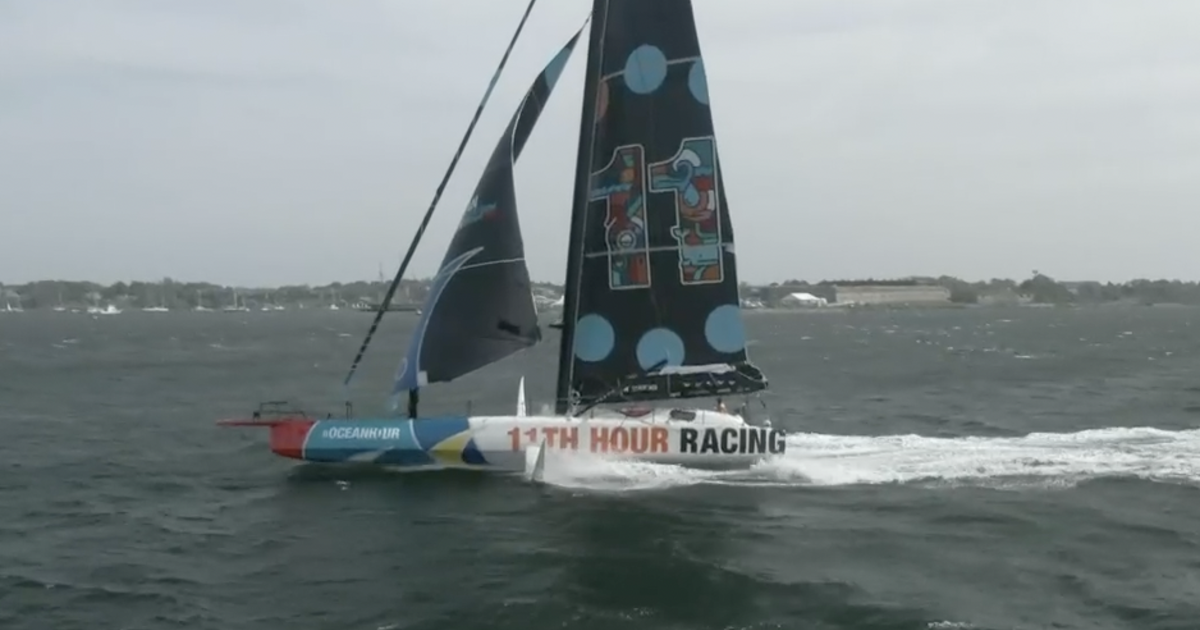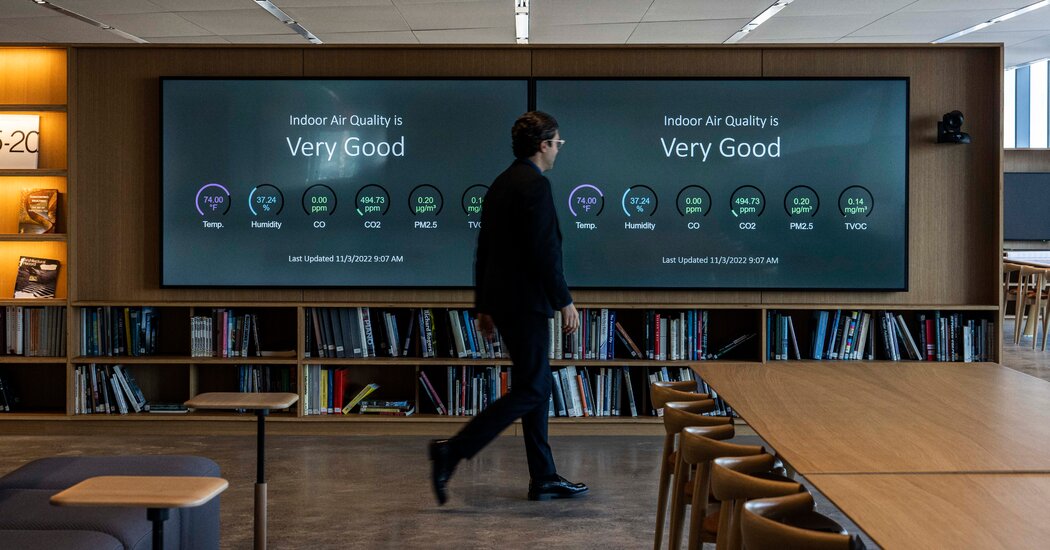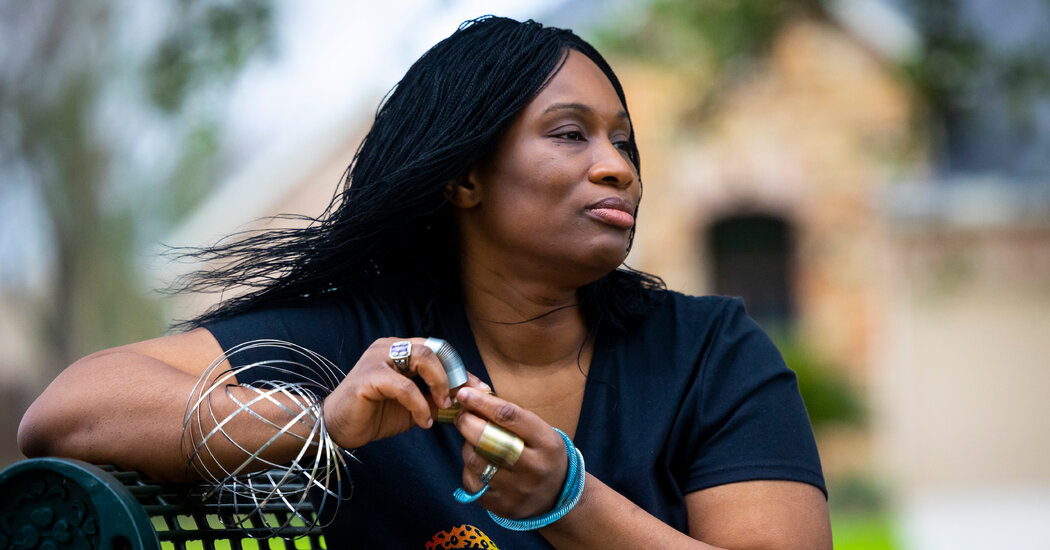Over-the-Counter Narcan Could Save More Lives. But Price and Stigma Are Obstacles.
If Narcan, the nasal spray that saves lives by reversing opioid overdoses, receives approval to be sold over the counter, public health officials hope the palm-size plunger could one day become as commonplace as a kitchen fire extinguisher.
The Food and Drug Administration is expected to authorize the switch from prescription status this week, a step long sought by state health officials and welcomed by parents worried about teens taking counterfeit, fentanyl-tainted pills and by owners of businesses from clubs to mall shops where people have succumbed to overdoses. By late summer, the rescue medication could be available in corner convenience stores, vending machines and through online retailers, and it could help to reduce national overdose deaths, which have exceeded 100,000 annually in the last two years.
But clinics and harm reduction groups, who have long pressed for the switch, worry that several factors may still impede widespread access to the medication — namely its price and the stigma that surrounds it.
Currently, a two-dose pack of prescription Narcan is often free to people covered by Medicaid or private insurance, or costs, at most, less than $10. But public and private insurance programs do not cover most over-the-counter medicines. Whether an exception will be made for Narcan could take months to resolve.
This month, a big-box pharmacy in Manhattan was charging $98 for the two-dose box of Narcan to customers without insurance. Another pharmacy chain in New Jersey charged $73.
Narcan’s manufacturer, Emergent BioSolutions, declined to disclose the price plans for an over-the-counter version, pending F.D.A. approval. The company said it would “work with public interest” groups, who are now charging about $47.50 a box. Health economists predict the new price could land somewhere between $35 and $65 — plus a retailer’s markup.
So the cost of the new out-of-pocket Narcan could make the spray prohibitive for many individuals, especially for those who inject opioids, and, indirectly, for the organizations that buy the medication in bulk.
“People who really need it won’t be able to afford it, so it is much more likely that it becomes an item that is shoplifted,” said Jim Thacker, who directs the Target4 Project, a statewide program based at the University of Kentucky that focuses on H.I.V. prevention and gives out free Narcan.
And that, he said, may create another obstacle: “Then Narcan will probably be put behind the pharmacist’s counter or behind glass, which creates a barrier to the people who can afford it but don’t want to ask for it,” he said.
Walgreens, CVS and Walmart would not comment on product placement for Narcan. A spokeswoman for the Consumer Healthcare Products Association, a trade group, would say only that “individual retailers work with manufacturers on in-store placements and make their own decisions regarding approaches to theft prevention.”
Narcan is the nasal spray version of the drug naloxone, which blocks an opioid’s effect on the brain. It has become naloxone’s dominant brand, because even a panicky, untrained bystander can easily administer it. A major impetus behind making Narcan more accessible is to encourage onlookers to step up during emergencies. The Centers for Disease Control and Prevention said that in 2021, bystanders had been present at about 46 percent of fatal overdoses.
Often bystanders are themselves people who have become dependent on opioids. Clinics and many harm reduction groups, who distribute millions of naloxone doses a year for free, fear that their ability to keep doing so could be compromised by the growing focus on the Narcan brand.
That is because many groups distribute a different form of naloxone: a liquid that comes in a vial with a small syringe. Some studies say the injectable version of the medication works more swiftly than the spray.
Most critically, it is far less expensive. Maya Doe-Simkins, a co-director of Remedy Alliance, which distributes hundreds of thousands of injectable naloxone doses to community groups in 44 states; Washington, D.C.; and Puerto Rico, said that as Narcan blankets the market, “States are spending their entire naloxone budget on expensive product, and there’s not enough money left for cheap injectable products.” Typically, these groups rely on state health department allotments, state and federal grants, plus newly released settlement funds from the national opioid litigation to pay for naloxone.
Some health economists predict that Narcan prices will gradually decrease, as volume increases and competitors enter the over-the-counter market. Ironically, two of the likely competitors have ties to pharmaceutical companies that were targets of litigation for their role in the opioid epidemic.
One, a naloxone nasal spray called RiVive, is awaiting F.D.A. approval. It is made by Harm Reduction Therapeutics, a nonprofit company whose goal is to develop a low-cost, over-the-counter naloxone spray to sell mostly to community groups and clinics, bypassing retailers’ markups. Since 2018, the company has received nearly $24 million from Purdue Pharma, the makers of the prescription painkiller OxyContin, a highly addictive opioid medication that is widely thought to have been a primary cause of the ongoing opioid epidemic.
Purdue is going through bankruptcy proceedings to settle thousands of opioid lawsuits against it, and will be restructured into a public benefit corporation. Last week, a bankruptcy judge authorized Purdue to donate another $9 million to Harm Reduction Therapeutics. Both companies said that Purdue had no commercial stake in RiVive.
Another naloxone nasal spray, currently available by prescription, is made by Teva Pharmaceuticals, a manufacturer of generic and branded drugs, including opioids. Teva will donate large quantities of its overdose reversal product as part of its opioid settlement agreements.
Under naloxone access laws, every state already permits pharmacists to dispense the nasal sprays to anyone who asks for it, regardless of whether the person has a prescription. But according to a recent report by the Reagan-Udall Foundation, an independent group that analyzes issues facing the F.D.A., of the 16.95 million naloxone doses distributed in 2021 — an acknowledged underestimate — just 2.64 million went through pharmacies. Most doses are given to emergency responders, clinics and community outreach workers.
That’s because in addition to price, there are other access barriers to naloxone. Studies show that independent pharmacists in particular, especially those in rural and impoverished urban areas, do not regularly stock the nasal sprays, often saying they do not want to engage with people who use drugs.
“Because of stigma, a large percentage of pharmacists have not offered naloxone to patients,” said Evan Peet, a health economist at the RAND Corporation who is concerned about out-of-pocket costs.
That deeply embedded stigma, plus price, are why direct naloxone distribution by clinics and harm reduction groups nationwide is vital to the people who most often need the medication.
James Moore, who owns a family-friendly bicycle shop in Hattiesburg, Miss., is trying to combat bias as well as the price of Narcan, which, he said, in his area can run well over $100 for a double-dose box without insurance. At his shop, he gives out free Narcan and training to anyone who asks for it.
Mr. Moore said he was excited about the spray becoming available over the counter because he thought it could eventually help to ease the stigma toward people who struggle with addiction — people like his son Jeffrey, who died in 2015 from an overdose.
Mr. Moore hadn’t known about naloxone when Jeffrey was alive. Ever since, he has worked tirelessly to educate families, students and law enforcement about its lifesaving properties. Television stations run his Narcan public service announcements.
Addiction and overdose fatalities are often still hushed up in Hattiesburg, Mr. Moore said. So when he learns about someone local who has just died from an overdose, he lowers the American flag over his shop and flies a purple flag at half-mast for five days. He hosts annual candlelight services for friends and families of loved ones who struggle with addiction. He takes people enrolled in inpatient rehabilitation programs out for group bike rides, and donates refurbished bicycles to those needing transportation to and from drug court.
But Mr. Moore, who receives Narcan from state mental health services, also worries about the out-of-pocket price for Narcan if it is approved for open shelf sales.
“As much as I love Narcan’s existence,” he said, “it pains me to know what it costs an individual without insurance every time they go to buy it. So I’m anxious to see it go up on Walmart’s shelves, and for the competitors to come along. I want somebody to be able to buy Narcan for the price of a hamburger.”


